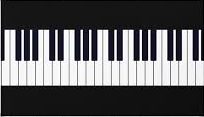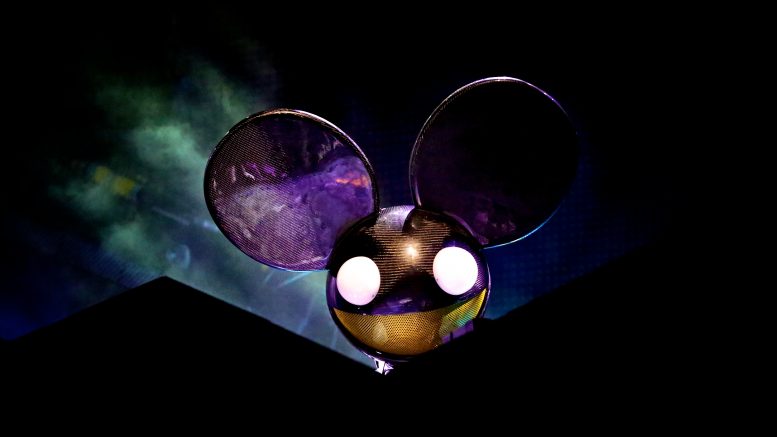Story by Nick Krewen | March 12, 2015
For SOCAN Words and Music.
He’s the mau5 that continues to roar.
And rule. If the maxim “he who has the most toys wins” needs a living example as proof, then EDM superstar deadmau5 – a.k.a. Niagara Falls, ON, native son Joel Zimmerman – is it.
Zimmerman’s recent relocation from a pricey downtown Toronto condo to a gargantuan, custom-sized mansion on an 118-acre rural farm, about 45 minutes from the city, is one such extravagance.
Presumably, “Maus Mansion” is also the location where Zimmerman intends to build a 45,000 sq. ft. recording studio for what he calls “real musicians.” Though this could be bluster, considering he’s also publicly expressed an interest in buying Marineland, an amusement park attraction in his hometown.
deadmau5 is the first Canadian musician to headline and fill Toronto’s cavernous Rogers Centre.
Another sign of his immense success is his growing collection of six- and seven-figure-priced cars. His McLaren 650S (or are there two of them?), a BAC Mono, which deadmau5 told the BBC “is kind of like a street-legal Formula 3 car”; a McLaren P1; a Bentley Continental GT Supersports; a custom Jeep Rubicon; a Range Rover; a Honda Fit; and a signature model Ferrari that Zimmerman had transformed into a “Purrari,” which he drove in the transcontinental Gumball Rally race.
But bling accumulation is only one measure of deadmau5’s popularity. The 2012 Rolling Stone magazine cover boy is easily the most recognized figure in electronic dance music (EDM) history, both for his music – a multiple Beatport and JUNO Award-winning, Grammy-nominated mix of progressive house, techno, trance and repetitive beats – and for creating a memorable visual presence in a usually faceless genre.
Zimmerman performs in his electronically-illuminated mau5head, a piece of headgear that remotely resembles a blissed-out Mickey Mouse. When the folks at Disney noticed, they requested that the United States Patent and Trademark Office investigate its stature as a trademark.
Laced with LED lights that react to the music he’s performing live, this ingenious signature has enabled Zimmerman to bridge the gap between underground and mainstream recognition. He’s hip enough that EDM lovers hunger for his next release, and cool enough that a cameo in a mainstream TV series like Gossip Girl or CSI doesn’t damage his street cred.
He’s certainly not averse to courting mainstream attention. “It’s fun to play along,” Zimmerman told Resident Advisor in 2008. “And if playing along means it’s gonna get you exposure to a six-million-wide audience that might have, by chance, been blissfully ignorant to the music you make, or to electronic music in general and then, in turn, tune in two million new fans… who are going to support new acts and new talent…”
In fact, playing along has found deadmau5 transforming himself into a dancefloor superstar that reportedly no longer performs for less than $100,000 USD a night. The first Canadian musician to headline and fill Toronto’s cavernous Rogers Centre (capacity 54,000), he’s rocketed to the top of his game in an impressively short amount of time, as per the title of his current compilation, 5 Years of Mau5.
How did he do it?
In his Niagara Falls hometown, Zimmerman took piano lessons, but the tide turned when he first became immersed in computers. “My uncle, who was more or less the black sheep of the family, was into all things technical,” Zimmerman told Resident Advisor. “He did some university stuff with computer programs when they were only a little bit more powerful than a pocket calculator. He was always the guy that the family would call to fix the computer.”
Weaned on Skinny Puppy and Steely Dan, Zimmerman began to toy with gadgetry – pulling things apart, putting them back together, and absorbing it all like a sponge. “Clocks, appliances, all that shit. I had a whole graveyard under my bed,” he told Rolling Stone in 2012.
According to Toronto Life, Zimmerman’s grandmother introduced him to video games, and that magic combination of technology and music helped set him on his way. Deadmau5 music has since appeared in DJ Hero, the Grand Theft Auto series, FIFA 13, Need For Speed: Most Wanted and even The Sims 3.
As a teen, he dabbled in computers and digital music tools and started attending raves held in secret locations, a period of time that Zimmerman longs for nostalgically. “The only bad taste left in my mouth is that there’s no more grey area with electronic music anymore,” he told Resident Advisor. “You buy your ticket to the big ‘rave’ at SkyDome [Rogers Centre] through TicketMaster and Live Nation. Dude, I really miss the meet-up points at Union Station and going to some dodgy thing that will very likely get shut down by the cops.
“That was fun, that was adventurous and it was a thing unique to you in your youth. And for kids today, that’s gone. I’ll always look back at it and be, like, ‘Dammit, I wish I could get that back.’”
At 17, Zimmerman moved to Toronto, produced tracks for house music label Play Records, took freelance programming and web development gigs, and worked with an audio software company out of Belgium.
“Contrary to popular belief, I was very underground,” Zimmerman once recalled. “I was in my Mom’s basement tooling away on Impulse Tracker on a 386, just doing Nintendo music until some Loop Library company hired me as a producer.”
deadmau5 continually introduces new, self-designed software to enhance the live experience.
Independently, deadmau5 issued albums like 2005’s Get Scraped and 2006’s Vexillology that initially stirred underground interest. But once he truly struck out on his own with his Mau5trap label and a partnership with Ultra Music and Ministry of Sound, Zimmerman’s career skyrocketed. His third full-length, Random Album Title, paired him with San Francisco’s Kaskade on “Move For Me,” which topped Billboard’s Dance Mix/Airplay charts in September 2008.
Another Kaskade collaboration, “I Remember,” followed “Move For Me” to the top of the charts and entered the U.K. Top 30. “Move for Me” and Random Album Title generated a JUNO nomination and victory, respectively, while deadmau5 earned the first of three consecutive Best Electro House Artist and Best Progressive House Artist awards from Beatport.
At the time, he expressed his goal of creating “transparent recordings.” “Something that is very clear,” Zimmerman explained to Resident Advisor, adding that he masters his music as he makes it. “Where you hear every nuance in the way that it’s mixed. Transparency applies to engineering, the placement of certain sounds, the honing in on and the lessening of certain frequencies.”
His album For Lack of a Better Name assured another breakthrough year for the mau5man in 2009, bringing him Grammy attention for the first time. His remix of Morgan Page’s “The Longest Road” featuring Lissie was up for Best Remixed Recording, Non-Classical. He’s since earned three consecutive nominations for Best Dance/Electronica Album, for 2012’s 4×4 = 12, 2013’s Album Title Goes Here and his latest original project from 2014, the 25-track, four-and-a-half hour while (1<2).
While (1<2) pays particular homage to one of Zimmerman’s early heroes, Trent Reznor, covering “Ice Age” from Reznor’s How To Destroy Angels project, and Nine Inch Nails’ “Survivalism.” Deadmau5 describes the creativity behind the album in general terms.
“It’s not just about making a dance hit or a brand,” he said on his website. “I love engineering music of all time… I’ve done hip-hop tracks, glitch tracks, piano concertos, and dance hits. I think a large part of my fan base knows that, so this is for them. And if it’s not for them, then maybe I’ll attract some new fans who aren’t so EDM.”
It’s really the stage that best serves his platform, as he continually introduces new, self-designed software to enhance the experience.
For live performances, Rolling Stone notes that “Zimmerman starts by building his set on his computer, programming whatever songs he wants to play into a two-hour collection of discrete six-minute blocks. Then he starts stripping away elements one by one – a kick drum here, a bass loop there, as many as he thinks he can get away with. Finally, in concert, he puts it all back together, re-creating each sound with his battalion of synthesizers.”
How he’s done it, deadmau5 told Rolling Stone, is with “a 16×16 grid where each button will light up, and that’s it. But with that, you can build your own sequencer and have each button doing a different thing. So Steve Duda built this monster of an application called MOLAR, which is an extended version of MLR.
“Steve really has a thing for complicated machinery, so he set it up so that we can load in wav [file] data and slice that up. It basically allows you to sequence a feed, MIDI triggers or wav data playback to a channel. You can permutate it in so many different ways that you can really jam on it… I’ll make 150 loops or something, and just chuck them into the directory.”
Sampling, sequencing, looping: deadmau5 continues to be EDM’s creative genius, a musician whose inventiveness and integrity continue to redefine the genre.
And he’s just getting started.
FYI
Publisher: EMI April Music Canada Ltd., Play Records Publishing
Selected Discography: Get Scraped (2005), Vexillology (2006), Random Album Title (2008), For Lack of a Better Name (2009), 4×4=12 (2010), Album Title Goes Here (2012), while(1<2) (2014)
Website: www.deadmau5.com
SOCAN Member since 2006
The mau5 that roars… and rules – SOCAN Words and Music

